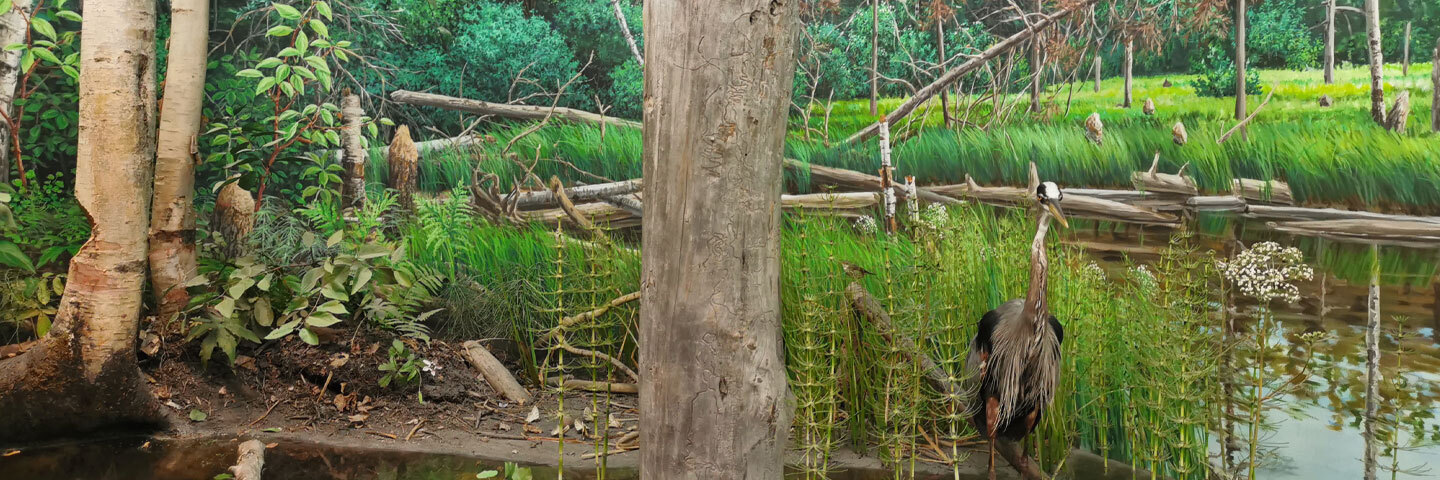Tour of the Province
Explore the diversity and beauty of Saskatchewan landscapes. The province has four ecozones, the Taiga Shield, the Boreal Shield, the Boreal Plain, and the Prairie, which are further divided into 11 ecoregions shown in the above video. Each of the ecozones and ecoregions are depicted in great detail through our award winning dioramas and displays.

Taiga Shield
Some animals have highly specialized diets, while others time their breeding to take advantage of the short, northern summer. As the largest living member of the deer family, Moose need to eat large amounts of food to obtain enough energy and nutrients. In the north, where sodium and other minerals are scarce, Moose forage mainly on sodium-rich water plants in the summer, consuming up to 60 kilograms each day. In the winter, their diet is restricted to twigs and shrubs, which provide them with a rich supply of energy but less sodium.
Boreal Shield
Large herds of Barren-ground Caribou usually start to enter Saskatchewan in early November, travelling south and west from the Northwest Territories and Nunavut. As many as 200,000 animals may winter here, but 10,000 to 20,000 is more typical. Caribou have large feet that are ideal for travel on snow and ice. They are also good swimmers, but they sometimes fall through the ice of frozen rivers and lakes and eventually drown.

Boreal Plain
Wildlife is abundant and the mixed-wood forests are highly productive because moisture levels are high. As a rule, moist habitats often support high levels of biodiversity. The Cougar, or Mountain Lion, is Canada's largest wild cat, but it is not restricted to mountainous areas. In Saskatchewan, Cougars live in both wooded areas and on the prairies, but are rarely seen. They prey mainly on deer, but will also take animals as large as Moose and as small as mice.
Prairie
The fastest mammals in North America, adult Pronghorns can avoid most predators by simply running away. With their long, slim legs and an over-sized heart, they can reach speeds over 85 km per hour in short bursts. They also have exceptional vision, thanks to their large, wide-set eyes.
Global View
Discover how Saskatchewan is linked to other parts of the world, from the Arctic to the tropics. Through interactive displays examine the connections associated with the climate and migration.
Costa Rican Rainforest
In the canopy of a rainforest, tree limbs are draped with ferns, fungi, lichens, mosses, orchids, and bromeliads. This tree-top forest is home to a tremendous diversity of insects, mammals, reptiles, and birds, including 200 migratory bird species. In the Costa Rican jungle, the Harpy Eagle is the ultimate tree-top predator. One of the largest eagles in the world, it feeds on large tree-dwelling mammals like monkeys and three-toed sloths.
MacKenzie Delta
They migrate through Saskatchewan in late May and early June to reach their nesting grounds in the Mackenzie Delta, and return as early as July!



